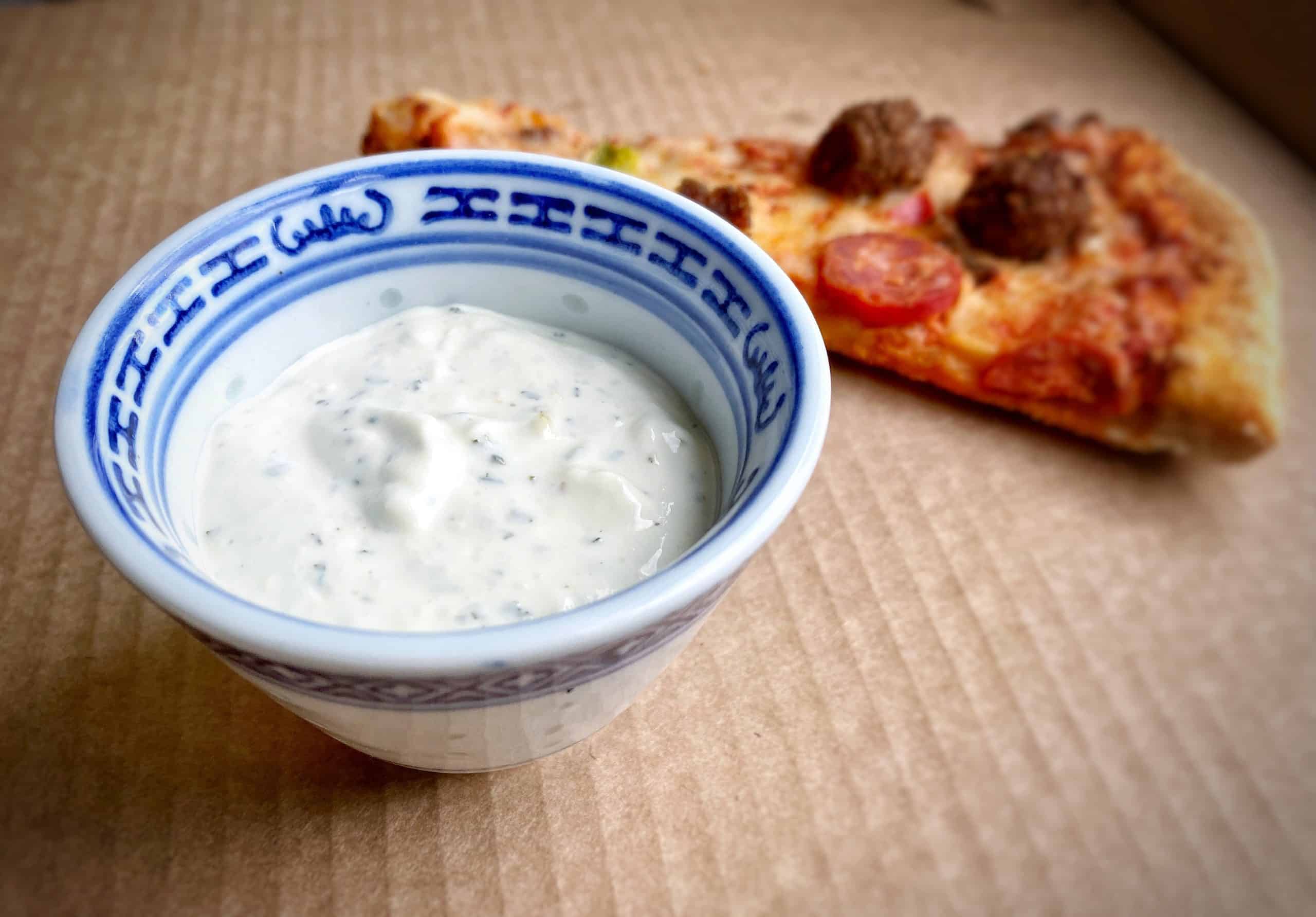
Photo: Jonathan Hatchman
A tried and tested Domino’s garlic and herb dip recipe, to easily make the famous sauce at home.
When it comes to food, the terms ‘good’ and ‘delicious’ aren’t always mutually exclusive. As somebody who writes about food, I’m constantly expected to have extremely high expectations, with an alleged affinity for luxury. “I doubt this is up to your standards”, is something I’m used to hearing when sitting down to eat a meal that’s been lovingly cooked by friends or family members. But even if the food is virtually inedible, it’s beside the point. Just because something wouldn’t necessarily be considered “restaurant quality”, it doesn’t necessarily make it any less delicious. In many cultures, the best food won’t be found in restaurants. It’s found in homes, markets, shops, petrol stations, places of worship. Unexpected locations in which to find ‘the perfect bite’. Yes, I like to eat well, but we all have guilty pleasures, and my list is seemingly endless.
Sure, food and food writing are subjective – especially with writing about restaurants – but crucial importance lies in the ability to honestly distinguish between your personal preferences, and what’s objectively good or bad. Fast food, for instance, is enjoyed by millions of people, but relatively few would actively describe it as ‘good’ food. And does it really matter whether it’s ‘good’ or ‘bad’? The exact definition is unclear – which, in itself, is problematic. The same principle can be applied to technically ‘good’ foods. It’s entirely possible for something to be technically perfect, but not necessarily enjoyable.
Apart from the science behind tastebuds, the actual enjoyment summoned by eating certain foods is deeply rooted in nostalgia. And considering no two people live through the exact same experiences, the results are widely open to interpretation and are often contentious. It’s thus the level of ‘enjoyment’ (or otherwise) stirred that’s the most subjective part of the eating experience.
Growing up, takeaway pizza was considered a treat, mainly reserved for relatively special occasions. Legions of pizza purists would argue that food from Pizza Hut or Domino’s, for instance, would never be rightfully considered ‘good’; but to so many it’s at the very least ‘enjoyable’.
Britain’s biggest pizza delivery chain, Domino’s Pizza plans to open 200 new UK outlets this year, having reported an underlying pre-tax profit of £101.2million last year, recording sales of £1.35billion, up 10.3 per cent on a like-for-like basis. Perhaps unsurprisingly, the first full week of the first national lockdown, was last year’s biggest for delivered orders, with Domino’s delivering 2 million pizzas. With restaurants, bars, and clubs closed on New Year’s Eve, Domino’s sold 14 pizzas every second.
Regardless of topping preferences, many Domino’s fans are united by a mutual love of the chain’s garlic and herb dip, which has gained cult status. The brand’s successful vegan range also contains a vegan garlic and herb dip, which is made using pea protein. Without the preservatives that allow the dip to last for months, the Domino’s garlic and herb dip recipe is incredibly easy to recreate at home, providing the correct ingredient proportions are used.
Having tested many iterations of the potential Domino’s garlic and herb dip recipe, a mix of mayonnaise and sour cream produces an end result closest to the original, with dried parsley instead of fresh, lemon juice, salt, sugar, a splash of white wine vinegar, and a suggestion of mustard powder (the dip’s secret weapon). Simply mix all of the ingredients and use as a dip for just about everything. This recipe yields approximately 250ml and can be stored in the fridge for a few days, providing it lasts that long.
RELATED: How To Make: Fried Chicken